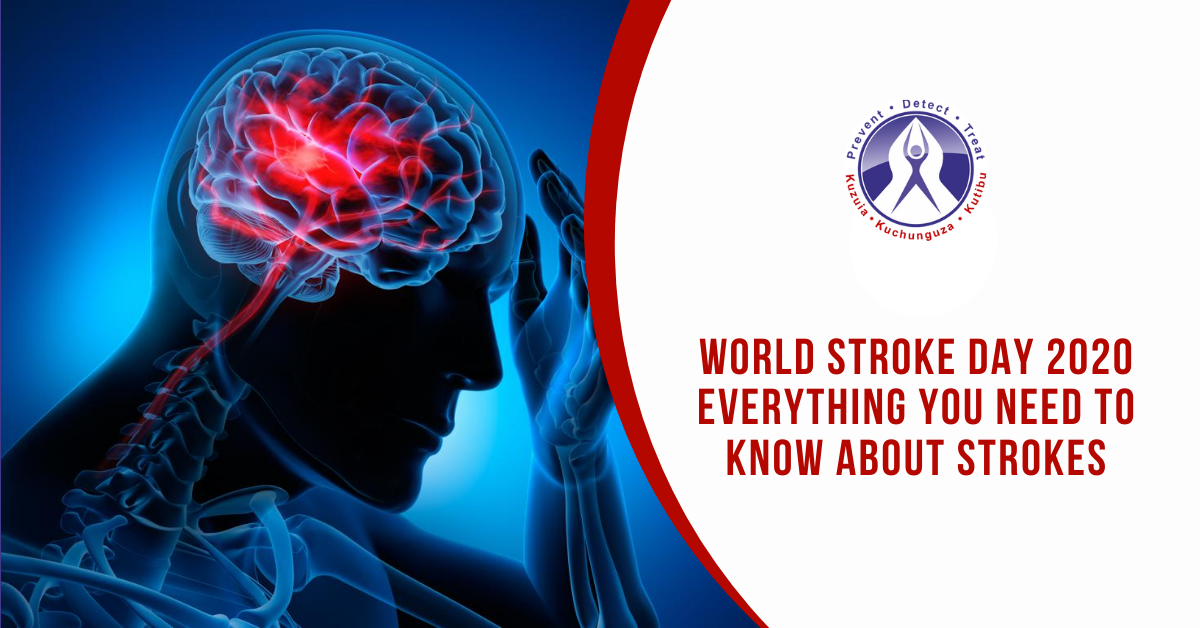World Stroke Day 2020: Everything You Need to Know About Strokes
771 viewsOur brain is one of the most valuable organs in our body. This central organ helps us remember so many things. It controls almost everything we do in our daily life. For example, if you’re reading this right now, it is not just because of your eyes but also due to your brain. It can collect, process, and act on the information you see and read right now. So, any problem with your brain can hamper your productivity in everyday life. One such condition is stroke. World Stroke Day 2020 is observed today on 29th October to raise awareness about strokes. It can happen to anyone at any time and any place. However, the good part is most strokes are preventable. That’s why stroke awareness is the need of the hour. This World Stroke Day, read along to know more about strokes, stroke symptoms, its various types, causes, and the right treatment.
What Is A Stroke?
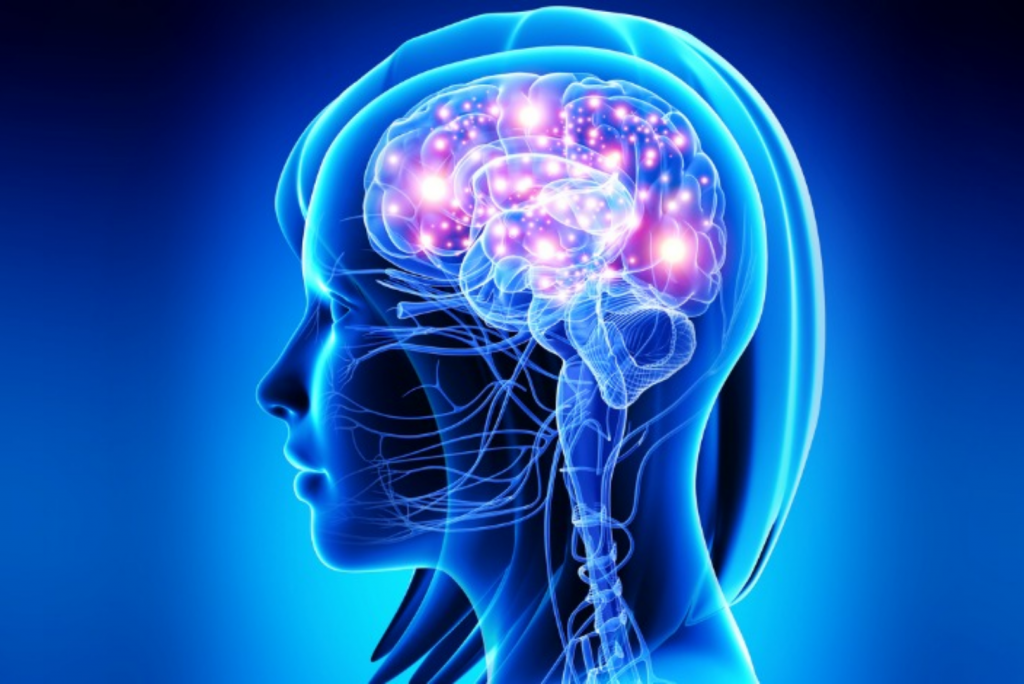
Our brain deals with multiple functions. Some of them are even carried out simultaneously. The important functions comprise processing knowledge, managing blood pressure and breathing, and releasing various hormones.
A stroke is an occurrence that happens in the brain organ. Here, a portion of the brain can stop working. It can be because of a blood vessel that breaks and may start bleeding. Sometimes, there can also be a block that creates a lack of blood supply. Consequently, the blood flow doesn’t reach the brain due to the block. Hence, both the blood and the oxygen does not reach the tissues of the brain. This leads to deep concern as it affects the functioning of our brain.
Symptoms Of A Stroke
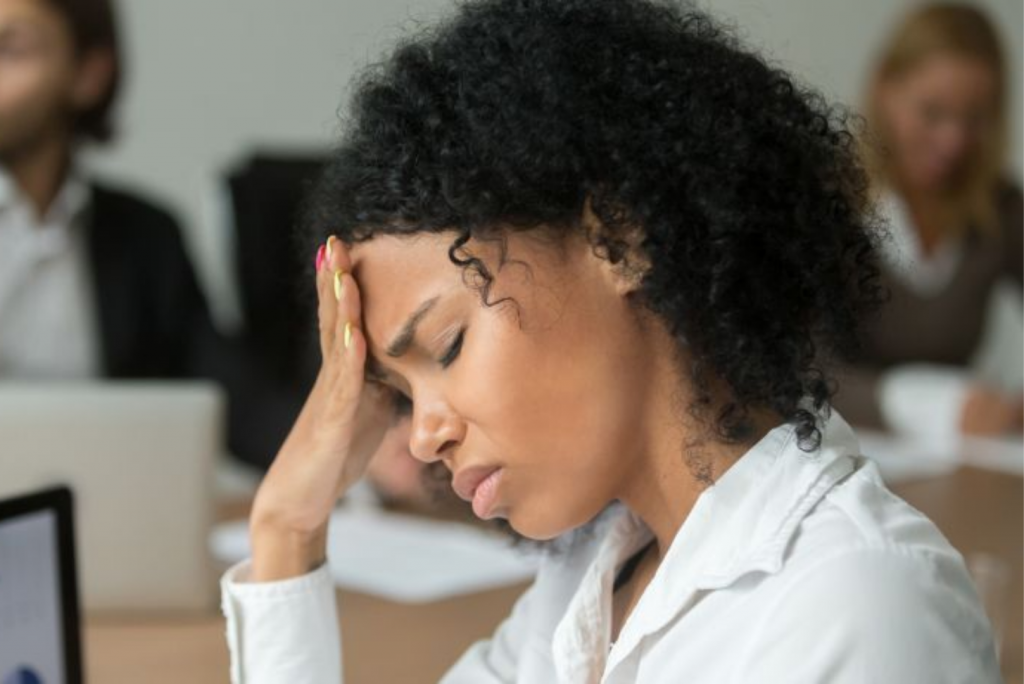
In strokes, the main area of damage occurs in the brain. As a result, there are also chances that it can affect other parts of our body. Hence, World Stroke day 2020 is a perfect reminder that seeking timely help is important to stay one step ahead. Here are some of the possible stroke symptoms:
- A sudden headache
- Dizziness
- A state of confusion
- Loss of balance
- Unable to walk or talk
- Weakness and numbness
- Vision problems
- Paralysis
- Trouble in understanding
For women in particular, apart from the above ones, other stroke signs include breathing trouble. Some women may also show a sudden change in their behavior. They can also feel vomiting sensations. Any symptoms that occur, one should immediately seek medical attention. You can also reach out to our free consultation portal to discuss your symptoms.
Types Of Strokes
Strokes can be of various types. Nonetheless, each stroke type needs proper care and medical assistance. They are mainly divided into 3 categories. The type of stroke can determine the right treatment. So, let us know more about the various stoke types in detail:-
-
Ischemic stroke
These are some of the most common types of strokes. In an ischemic stroke, the blood vessels that pass on the blood becomes narrow. These try to pass it to the brain. But due to narrowness, it can also be blocked. Such blocks create blood clots. They decrease the amount of blood passed to your brain.
An ischemic stroke is further categorized into thrombotic stroke and embolic stroke. A thrombotic stroke is a type of ischemic stroke that happens when a blood clot is developed. It can probably be in one of the arteries (blood vessels) that provide blood to the brain. Later, this clot gets away from the bloodstream and lies in the middle. This creates a block in the flow of blood.
On the other hand, an embolic stroke occurs when the blood clot develops in other parts. That means particularly, not in the brain. It may form in the heart or a person’s neck. However, it still does move to the brain. Thus, the blood clot gets stuck in the blood vessels of the brain. As a result, a stroke happens due to a blood clot.
-
Transient Ischemic Attack (TIA)
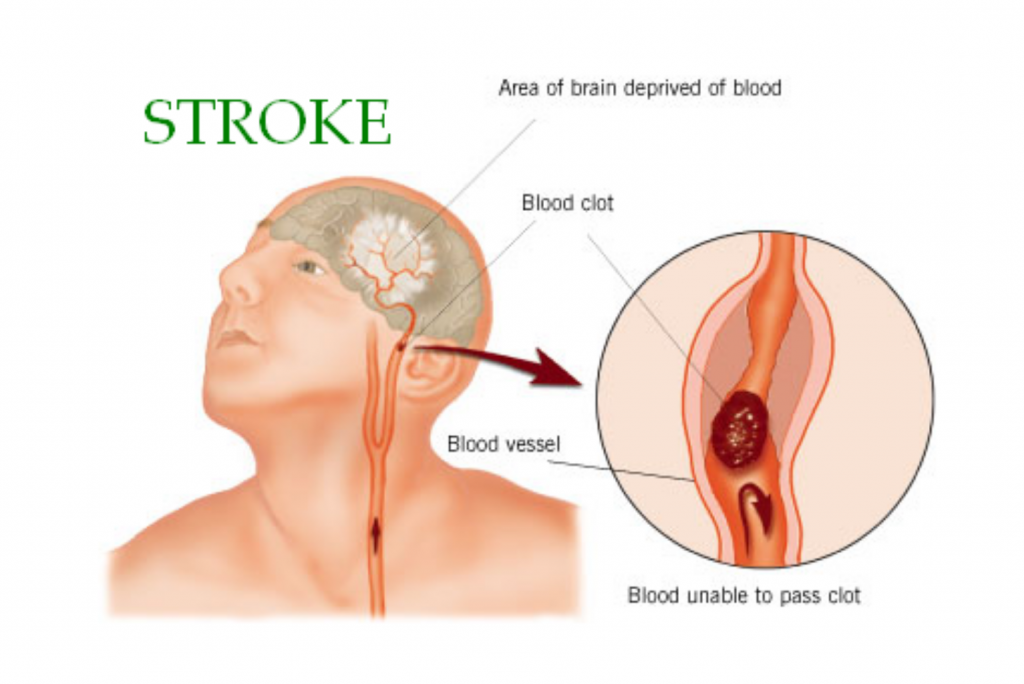
This stroke type is a ministroke. TIA or transient ischemic attack happens when there is a temporary block. The block again hampers the blood flow. However, symptoms may often not appear after a few hours. Though it’s temporary, this stroke cannot be ignored. It likely occurs as a warning. This warning can be for a probable stroke shortly. So, getting it checked by your doctor is the foremost step to stay safe.
-
Hemorrhagic Stroke
Hemorrhagic strokes occur when the blood vessel cracks open and starts leaking. This happens inside the brain. So, it’s internal bleeding which is medically called hemorrhaging. Hemorrhagic strokes are further classified into two: subarachnoid and intracerebral.
A subarachnoid hemorrhagic stroke isn’t so common. It happens when there is bleeding in the brain. But, the bleeding occurs between the brain and the vital tissues that shelter it.
Comparatively, an intracerebral hemorrhagic stroke is a more common type. It occurs when the nearby tissues of the brain fill with blood. This is because this stroke type causes the artery to burst strangely.
Causes Of A Stroke
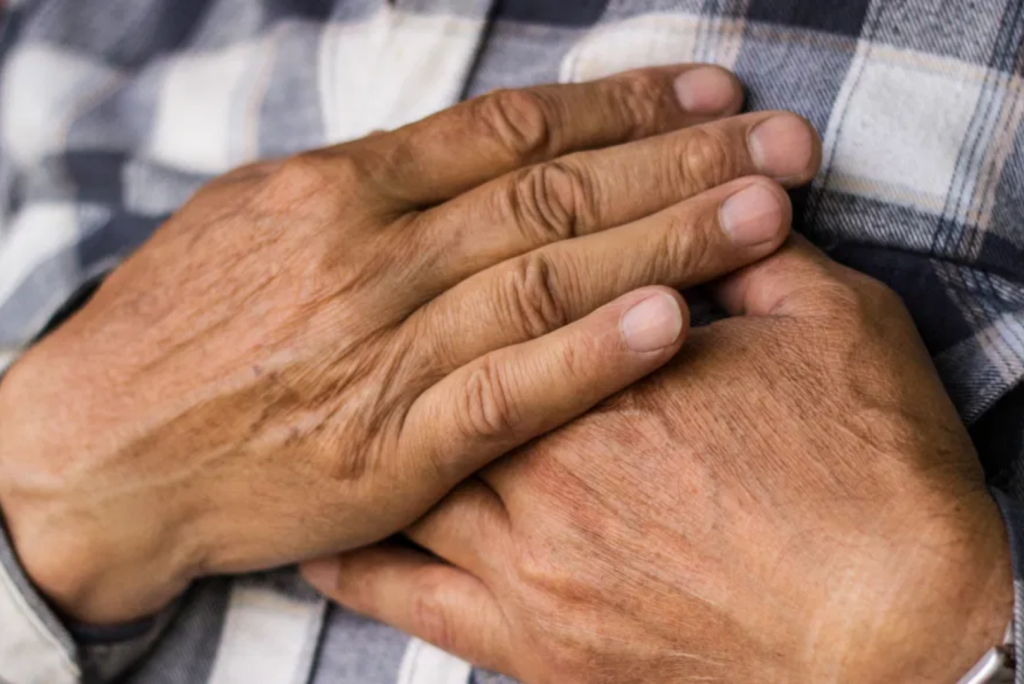
Stoke causes can be mainly due to two reasons. Because of an artery that is blocked (ischemic stroke) or it could be due to the blood vessel burst. In this case, it’s a hemorrhagic stroke. Alternatively, the transient ischemic attack does not have long-lasting symptoms. It causes mostly because of short – term interference.
Other risk factors for stroke can be an unhealthy diet or lack of exercise. Using tobacco and drinking alcohol can also increase your chances of getting a stroke. Therefore, it is recommended to avoid such practices. To seek guidelines and help reduce such activities, you can consult your doctor.
Apart from these, some medical conditions like a temporary stroke-like TIA, high blood pressure, heart problems, diabetes, or sickle cell disease can be a stroke risk.
Treatment For Strokes
During the initial examination, your doctor will ask you about the symptoms. Each person can have different symptoms. Along with symptoms of the stroke, he will also check your medical history. This will help your doctor to figure out your linked risk factor (if there’s any).
Later, a physical exam is done to understand your ability to talk, walk, balance, and coordinate. Any numbness or confusion will be found in the exam. Afterward, there will be various tests taken to further provide the right treatment. These tests may include a blood test, MRI, and CT scan.
In some cases, it also includes a cerebral angiogram and echocardiogram. These can give a detailed look at your arteries in your heart, neck, and brain. This helps the doctor to find the source of the blood clots to provide the right treatment option.
For Ischemic stroke and TIA
Medications can be one of the first steps in treatment for strokes. The medicines that help in subsiding the blood clot in an artery are called anticoagulants and antiplatelet. Anticoagulants often aid in slowing down the blood clotting. Antiplatelets, on the other hand, prevent it from forming and growing more.
Secondly, your doctor may perform a mechanical thrombectomy. In this process, your doctor will insert a soft hollow tube. Then, with a device, he/she will take out the clot from the blood vessel. Mostly, this surgery is performed within 24 hours after the stroke. Luckily, in most cases, it is successful surgery.
Another option is going for a stent. Here, your doctor will look out for weak artery walls. Then, the doctor performs a procedure for inflating the narrow artery. This will help in carrying the artery walls with a stent.
For Hemorrhagic Stroke

Here, the strokes create leaks in the brain. Thus, they need other treatment options. The medications prescribed by your doctor can help in reducing the blood pressure and seizures. Apart from medications, one of the stroke treatments can be coiling. It is a process where your doctor puts a tube in the hemorrhaged part. He/she inserts a coil-like tool to the weak areas of the artery wall. This can prevent bleeding.
If the doctor finds a non-bleeding aneurysm during the tests, it can be preventable. The doctor may try to keep a little clamp at the base of the aneurysm. This can prevent any chance of bleeding. However, he/she may do surgery to clip if the aneurysm is burst. This can also prevent more bleeding and start your road to recovery.
Conclusion
Stokes can be common. Clearly, it can occur at any place. However, on World Strokes Day 2020 let’s also remember the fact that most strokes can be preventable. Some of these preventable measures include reducing your alcohol consumption and quitting smoking. Additionally, aerobic exercises can help you maintain your weight which will be beneficial. Overweight can increase your stroke risk. So, it is always recommended to eat mindfully and have a healthy diet. Furthermore, regular health check-ups will always keep your health in check. So, it is advisable to timely book an appointment for a complete health checkup. Lastly, if you experience any stroke symptoms, ensure you reach out to us. Do not worry. You can recover soon. Seeking timely medical attention is the most favorable action for your health. Our specialized diagnostics facility at Regency Medical Centre can provide you with the right diagnosis and the best possible patient care.
Doctors, nurses, and support staff at Regency Medical Center are working 24 hours to ensure our patients’ emergency needs are taken care of. We are there to help the people of Dar es Salaam with medical emergencies. Contact us here for any COVID-19 related issues or you can call the emergency staff on +255 765 835 950.

